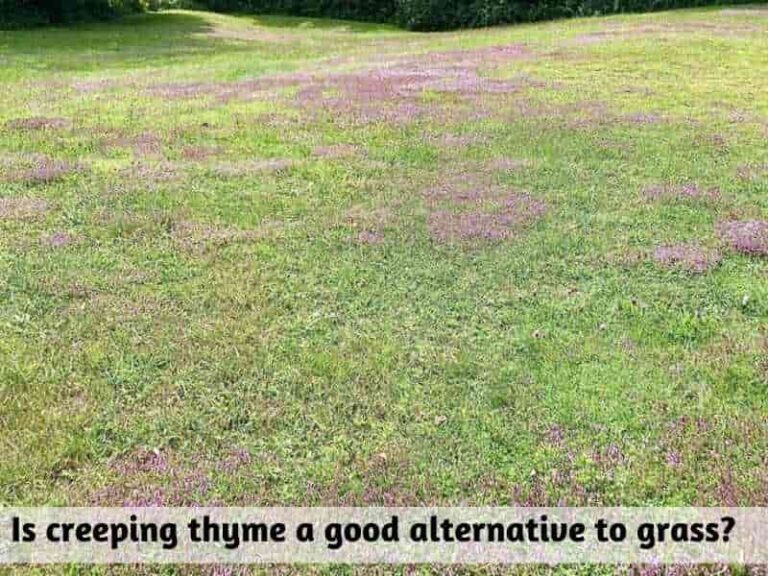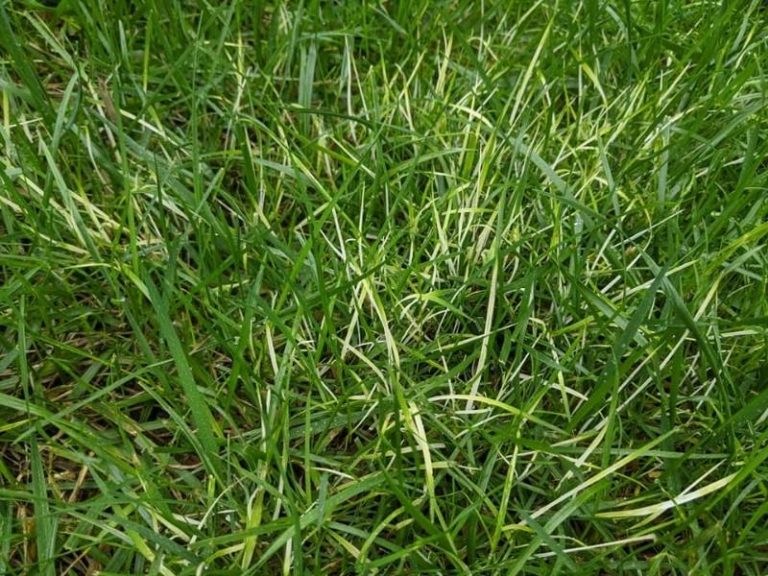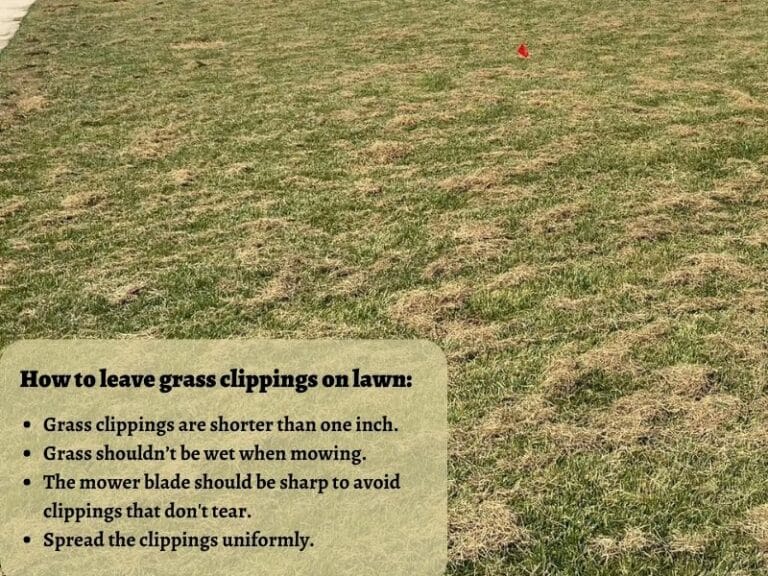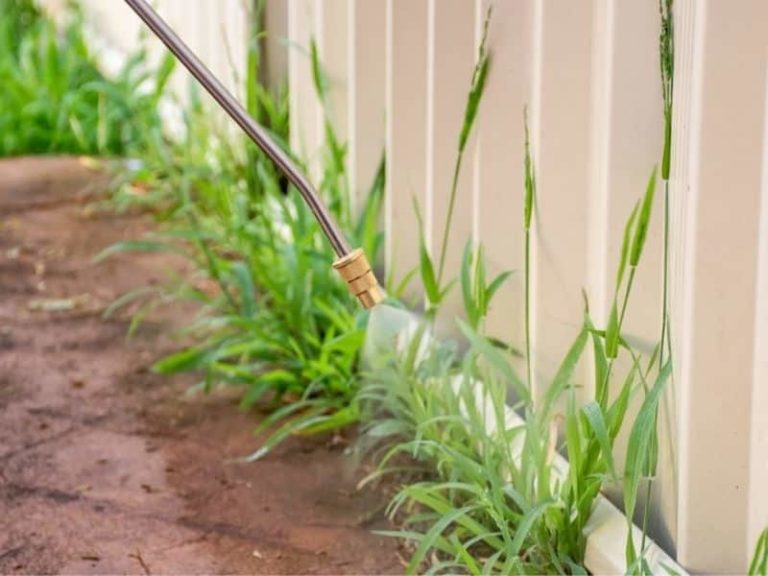Centipede Grass Problems
Centipede grass is a top choice for many homeowners and landscapers. Although centipede grass is regarded as low-maintenance, it must be properly managed to maintain its quality and aesthetics. Most centipede grass problems arise from improper management. Correct identification of these problems will help you deal with them.
Centipede grass problems that contribute to its decline include:
- Centipede decline
- Yellowing or Iron Chlorosis
- Brown Patches
- Fairy Rings
- Insects Such As Ground pearls
- Nematodes
Serious attacks from any of these centipede grass problems may severely damage your lawn and eventually lead to its death.
We’ll break down the causes of these problems and arm you with counteractive tips to manage, prevent, and control these problems.
Table of Contents
What Causes Centipede Grass Decline?
Centipede grass lawns can thrive or decline depending on the care and maintenance steps taken on the lawn by the homeowners. Centipede grass can decline due to compacted soils, excessive thatches, drought/underwatering, diseases, pests, heat, and climatic-related stress.
Over-fertilization of centipede grass introduces high nitrogen levels, leading to excessive vegetative growth. Compacted soils, pH above 6.0, high phosphorus levels plus a thick thatch layer can also aggregate to the centipede grass decline and other problems.
Note: Centipede decline problems can be detected early as it starts wilting, yellowing, formation of brown patches, nematodes, pest and weed infestation.
Signs of centipede grass problems
Factors that cause centipede grass problems are categorized as:
- Environmental factors such as soil conditions and water.
- Nutritional factors
- Cultural practices
Fortunately, you can correct these problems. Let’s break down how to identify these problems.
1. Yellowing or Iron Chlorosis
This can be caused by excessive nitrogen, high pH levels, or high phosphorus levels. Overfertilization causes fertilizer burn, which results in yellowing.
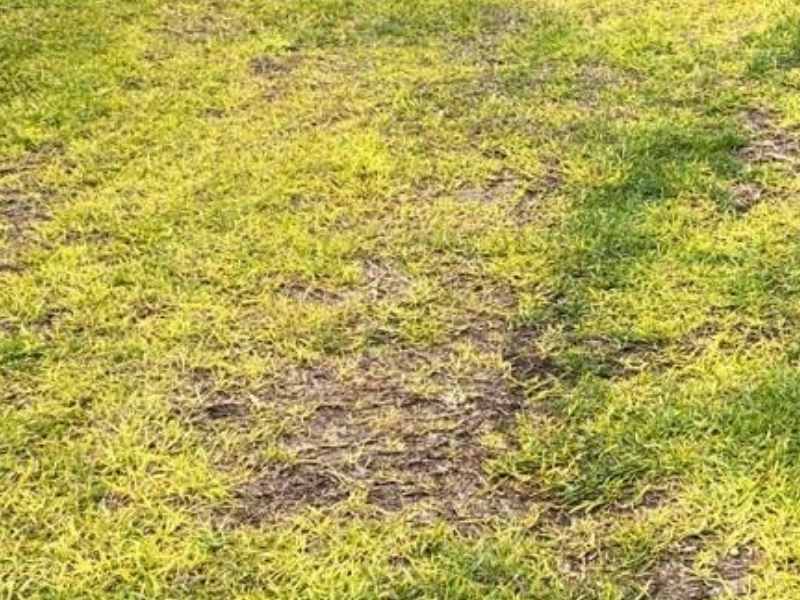
Yellowing in early spring could also result from iron or manganese deficiency caused by the soil temperature being lower than the air temperature.
2. When the grass remains dark green
Centipede grass is typically light green. If you notice the grass is retaining a darker shade of green, it’s likely due to an oversupply of Nitrogen in the soil. Excess nitrogen leads to Centipede Decline. Eventually, the grass dies in the summer if the Nitrogen problem is unaddressed.
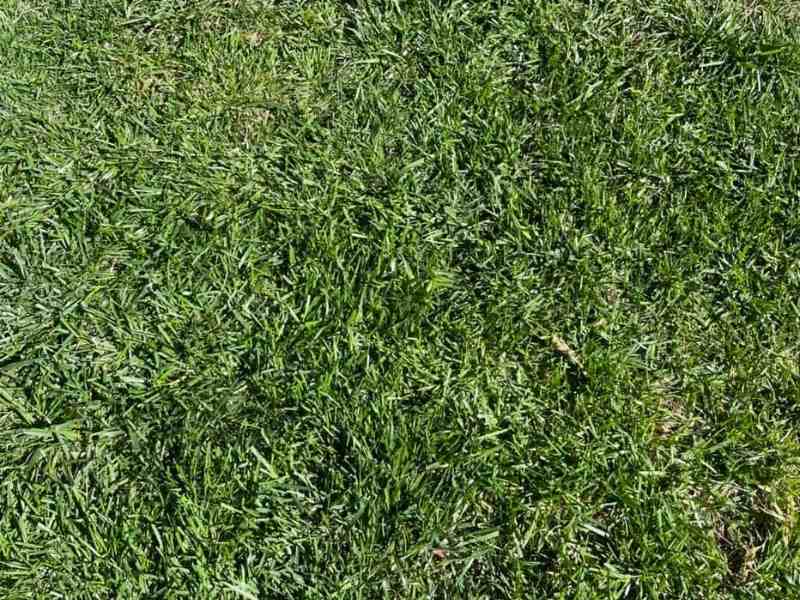
3. If the grass dies out in a semi-circle or a complete ring
Centipede grass blades curling up is common during spring or summer. During this time, the blades fade into a dull green during the dry weather. The main issues here are drought stress, water unavailability, poor root development, or nematode infestation.
4. When the grass feels fluffy or spongy
A Spongy centipede grass lawn is an indication of a thatch layer. This could also indicate insect or pest infestation, such as ground moles or mole crickets. Dethatching centipede grass lawn should be able to address this issue unless it’s caused by drainage issues.
Read Also: Dethatching Vs. Aerating: Differences + Which is Better
5. Shallow roots that can easily be pulled out
This is a result of shallow and frequent watering. This can lead to the grass dying. Deep watering encourages deep-root development.
6. Pesticide and herbicide burn
Some chemicals that control and prevent weeds and diseases also cause excessive centipede injury.
7. Dead grass blades and roots
Watch out for dead grass blades and roots during winter or chilly weather. Harsh cold causes winter dieback. The centipede grass’ top foliage and roots die and leave brown patches on your lawn. Also, erratic changes between warm and cold weather can be responsible for winter dieback.
Generally, temperatures below five degrees Fahrenheit will kill the grass. The best solution is to replant the grass in the affected areas. Alternatively, planting another species of turfgrass that is more cold-tolerant would be ideal.
Centipede Grass Problems + Fixes
Fortunately, the centipede grass problems can be alleviated and even totally eradicated. Here is how to deal with some of those common problems.
Overfertilization
Overfertilization causes Centipede decline, making the turfgrass weak and susceptible to fungal attack. Perform a soil test before you fertilize the lawn. Fertilize your lawn after spring and reapply fertilizer in summer.
Note: The nitrogen fertilizer should not exceed 2 pounds per 1000 square feet yearly.
Iron Choloris
First, determine the correct cause of the choloris. Spray Iron sulfate at a rate of 2 ounces per 1000 square feet or chelated iron material to curb iron deficiency. Use the correct amount of Iron and follow the directions on the label.
Note: As the soil temperatures begin to rise, the yellowing should go away if temperature differences had caused it. Lime and sulfur are other possible solutions for yellowing.
Insects
Centipede grass is prone to attacks from insects such as Mole crickets, grubs, spittlebugs, and ground pearls. Each insect has its own cultural and chemical control method.
Mole Crickets and grubs become active and hatch as temperatures begin to rise in late spring and summer. This is the perfect time to apply insecticides.
Diseases
They often occur in damp conditions due to too much irrigation or rain. These are some common diseases to keep an eye on.
- Brown Patch: Brown patch is a fungal disease also known as Large Patch. Brown patch infected leaves will have a brown thinning spot in the middle. This disease causes the grass to have circular brown areas that start small and can spread to cover a large area of about 20 feet in diameter.
Brown patch is usually caused by:
- Overfertilization with nitrogen
- Fertilizing too early or late with nitrogen
- Poor drainage
- Excessive thatch
- Excessive irrigation.
- High temperatures of about 70 to 85 degrees also create a conducive environment for brown patches. The best solution to Brown Patch is following good lawn maintenance practices and conditions.
Using fungicides should be the last resort since they will not stop the disease from occurring if you slip up on proper maintenance practices.
- Dollar spot: Dollar spot is another fungal disease that affects Centipede grass. Dollar spot often occurs during the summer in lawns with excess thatch and low nitrogen. The leaves of the grass develop brown spots on the grass blades that are about 2 to 4 inches in diameter.
Apply nitrogen fertilizer at 1 to 2 pounds per square feet rate to get rid of this fungus. Additionally, proper centipede grass cultural practices like correct mowing height, aeration, and thatch removal will control dollar spots.
- Fairy rings: Fairy ring disease gives the grass brown or dark green circles or arcs. There are different types of fairy rings. The first type has large rings of dead grass on the lawn. The other type of fairy ring is characterized by a ring of fungal fruiting bodies, i.e. mushrooms or toadstools.
Some of the fungi that cause fairy rings on centipede grass are found in woody materials such as dead tree roots and stumps. The fairy ring can range from a few inches to 5 to 10 feet in diameter. They are spread by wind or by contaminated organic matter or soil.
Here is how to control Fairy Rings.
- Avoid using compost with high levels of undecomposed organic materials. Dethatch, irrigate deeply and core-aerate the soil to reduce soil plugs.
- Remove tree stumps and other organic matter in the soil.
- Topdress with a thin layer of fine sand to dilute the amount of organic matter.
- Use commercial fungicides to cover large areas.
Consider contacting a professional or planting another grass species if your Centipede grass continues to die or decline after control measures.
Centipede decline problem is best prevented through proper lawn management practices. These practices includes watering when the need arises, proper fertilization preventing thatch accumulation, and mowing at about 1 to 1.5 in.
Centipede grass identification+characteristics?
Centipede Grass is a low-maintenance warm-season grass. It is a medium-textured, low-growing, and slow-growing turf that produces dense and attractive turf. It has high root density, mass, and length if properly cared for. It spreads by its thick, short-noded stolons, which are replaced every year.
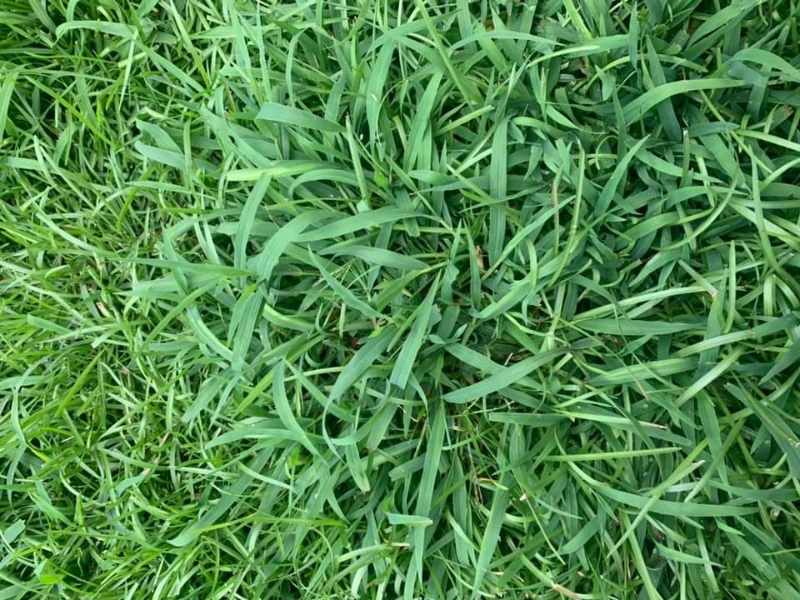
Typically, Centipede grass grows in the sandy soils of southern regions. However, it can also grow in silty loamy soils and fine sand. It does well in a range of soil textures except for coarse sands. It also has a good adaptation of infertile soils and acidic soils.
Centipede grass takes about 21 to 28 days to germinate. It grows slowly and may take up to two years to establish. Centipede grass problems start three years after establishment if the lawn is not maintained. Centipede tolerates high temperatures common in the southern region. It is also considered drought tolerant. It will still thrive despite frequent water unavailability.
Centipede grass fairly tolerates mild winter temperatures however it is sensitive to cold and freezing temperatures. Several centipede grass varieties have been produced that exhibit good cold resistance. It grows well in the sunlight and moderately tolerates shade. Traffic and wear cause compaction in centipede grass which ultimately results in centipede grass stress. It thus recovers slowly from traffic.
Centipede grass lawn care and maintenance practices
- Fertilization should be at one pound per 1000 square feet per year. It should be applied from mid-spring to mid-summer. Ensure you follow soil test analysis recommendations to determine nutrient requirements. Growing centipede grass requires about one inch of water per week. If it is on sandy soils, it will require more.
- Mowing height should be about 1 to 1.5 inches tall. You can make it higher to about 2 inches in the late summer. Do not let your grass surpass 2.5 inches as this will promote thatch accumulation. If weeds like knotweed and spurge are actively growing, apply post-emergent herbicides. Apply pre-emergent herbicide to control crabgrass, foxtail, and goosegrass. Take all the necessary precautions when applying herbicides on centipede grass.
- Typically, southern sands don’t provide optimum conditions for dethatching. However, use a dethatcher or a vertical mower when thatch becomes a problem. Dethatching and aeration should be done regularly to prevent the lawn from being compacted. Aeration improves infiltration and drainage.
What are the dead patches of centipedes?
Centipedegrass lawns may develop dead patches due to various issues. Brown Patch Fungus, a fungal disease, creates circular brown patches in warm, humid conditions. Nematodes, microscopic roundworms, feed on grass roots, causing thinning turf and irregular dead spots. Armyworms and Cutworms, leaf-eating caterpillars, can rapidly damage the lawn, especially in summer. Chinch Bugs, small sucking insects, extract juices, leading to yellowed, thinning turf. Dog urine spots with high nitrogen and salt content can burn and kill centipedegrass. Drought stress causes dormant, brown patches, recoverable with irrigation. Precise care tailored to each problem is essential for a healthy lawn.
What insect kills centipede grass?
Insects such as spittlebugs or froghoppers, lawn caterpillars, ground pearls, mole crickets can damage and kill centipede grass lawn. Mole crickets uproots seedlings and damaging their root systems. Spittlebugs can cause make grass to turn brown or yellow and die.
What causes bare spots in centipede grass?
Bare spots in centipedegrass lawns result from factors like heavy foot traffic compacting soil, poor drainage in soils hindering root growth, inadequate watering causing dry patches, improper mowing weakening turf, and diseases or pests like Brown Patch Fungus and Chinch Bugs damaging the grass. Identifying the specific cause is crucial. Addressing issues through proper care, aeration, consistent watering, and effective pest control is key to restoring a vibrant and healthy centipedegrass lawn.
References
- University of Georgia Extension, Centipedegrass; Centipedegrass Decline

